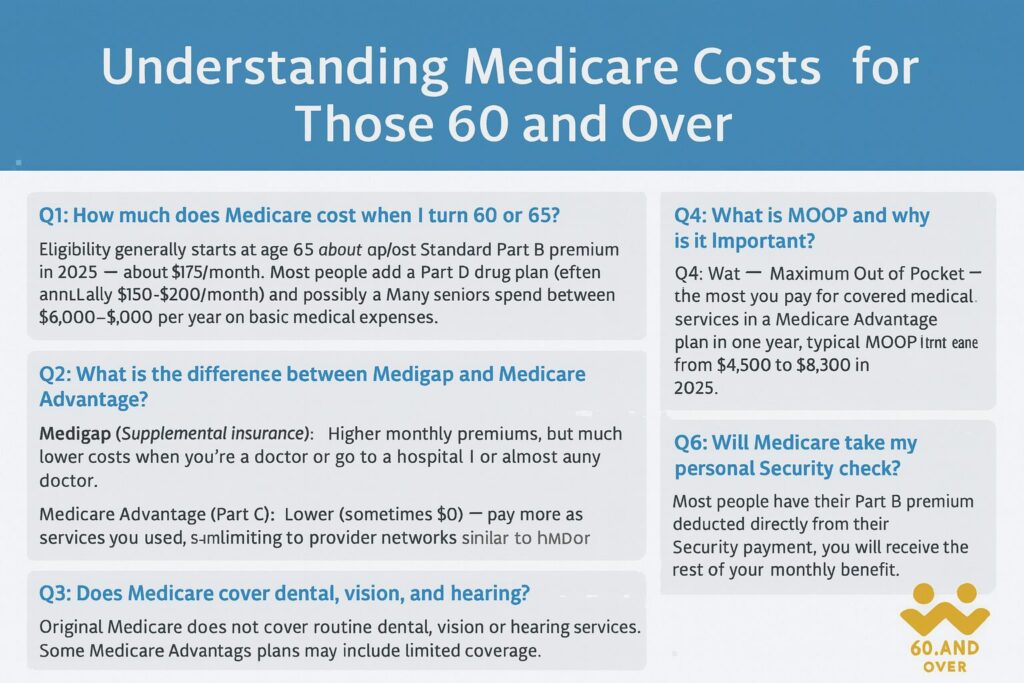Starting January 1, 2026, a major change to Medicare Part D will take effect — one that could dramatically reduce what seniors pay for prescription drugs. Thanks to the Inflation Reduction Act of 2022, Medicare will cap annual out-of-pocket prescription costs at $2,100.
This marks one of the most significant updates to Medicare in decades and could help millions of retirees finally get predictable, manageable drug costs.
1. What the New $2,100 Drug Cap Means
For the first time in history, Medicare beneficiaries will have a hard limit on how much they pay for covered prescription drugs each year. Once your out-of-pocket costs reach $2,100, you won’t pay anything more for covered Part D prescriptions for the rest of the year.
The cap includes all deductibles, copayments, and coinsurance paid for covered drugs — everything that counts toward your annual drug costs. (Centers for Medicare & Medicaid Services)
Before this change, there was no true limit, meaning many seniors spent thousands more on life-saving medications.
2. Why This Change Matters for Seniors
Seniors who take multiple brand-name or specialty medications stand to benefit the most. In previous years, it wasn’t unusual for retirees with chronic conditions to pay $3,000–$6,000 annually in out-of-pocket costs.
Now, under the 2026 structure, that amount is capped at $2,100 — a significant savings for anyone managing conditions like diabetes, cancer, or rheumatoid arthritis.
As Kiplinger reports, this change brings relief to millions who were forced to choose between medication and essentials like food or rent.
3. How It Works
Here’s a quick breakdown of how the new system functions:
- Everything you pay for covered Part D prescriptions (including copays and coinsurance) counts toward the $2,100 cap.
- Once you hit that number, your plan covers 100% of remaining covered prescriptions for the rest of the year.
- The cap applies to Medicare Advantage plans with drug coverage as well as stand-alone Part D plans.
- Some costs — like premiums or non-covered drugs — don’t count toward the cap. (Medicare.gov)
4. What to Watch During Open Enrollment
Medicare Open Enrollment runs October 15 to December 7 each year. Here’s what to review before the new rule takes effect:
- Compare your plan’s formulary (drug list).
Make sure all your current prescriptions are still covered. - Check your plan’s 2026 deductible and premiums.
Deductibles are projected to rise to around $615, according to Kiplinger’s Medicare forecast. - Look into the Medicare Prescription Payment Plan (MPPP).
This new feature lets you spread your drug costs across 12 months rather than paying large sums upfront. (Medicare.gov PDF Guide) - Review your pharmacy network.
In-network pharmacies usually offer lower costs. Check your plan’s preferred providers. - Keep records of your out-of-pocket totals.
Your plan should track what counts toward the cap — but it’s smart to verify for accuracy.
5. The Broader Impact of the Inflation Reduction Act
The $2,100 cap is part of a broader reform under the Inflation Reduction Act, which also allows Medicare to negotiate drug prices directly with pharmaceutical companies for the first time.
This negotiation aims to lower costs on high-priced brand-name drugs — a benefit expected to expand through the decade. (White House Fact Sheet)
By combining direct negotiation with cost caps, the law gives seniors more transparency, affordability, and peace of mind.
6. What’s Not Covered
While the cap is a huge win, it has limits. Keep in mind:
- It applies only to Part D (retail prescription drugs), not Part B (hospital or doctor-administered drugs).
- You’ll still need to pay monthly premiums for your Part D or Medicare Advantage plan.
- Drugs not on your plan’s formulary don’t count toward the cap.
That means it’s critical to choose a plan that covers the medications you actually use.
7. Bottom Line: Predictability and Relief
For seniors living on fixed incomes, unpredictability is one of the hardest parts of paying for prescriptions. The 2026 Medicare $2,100 cap finally changes that.
No more guesswork. No more devastating pharmacy bills. Once you hit the cap, you’re covered.
This isn’t just a financial change — it’s peace of mind for millions of retirees across America.





